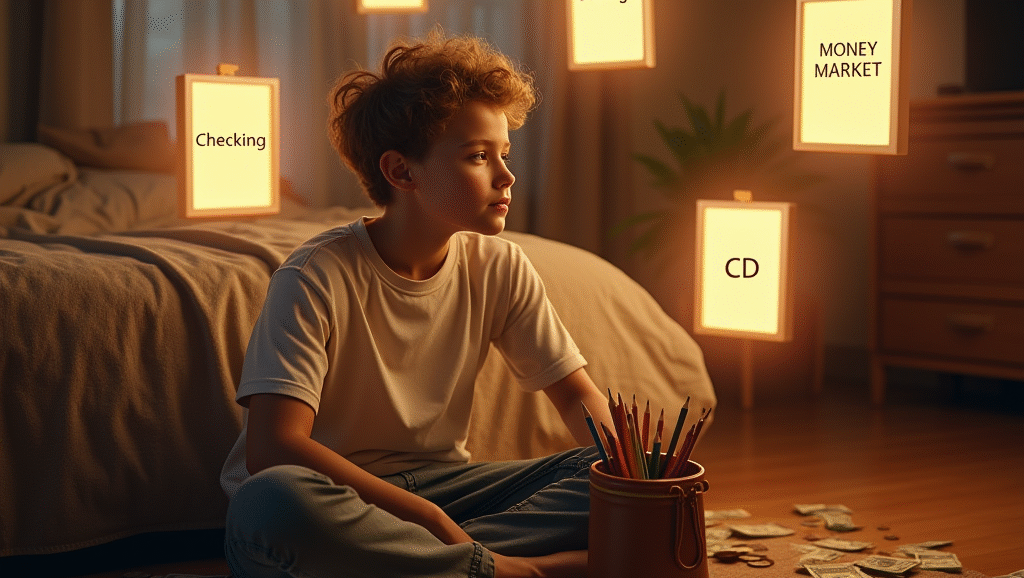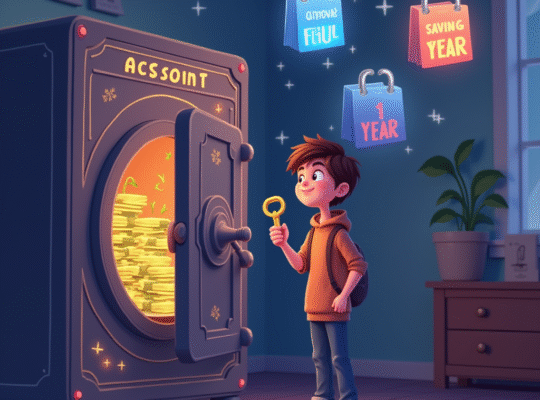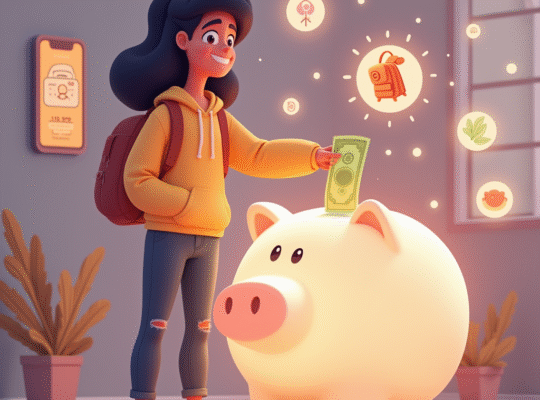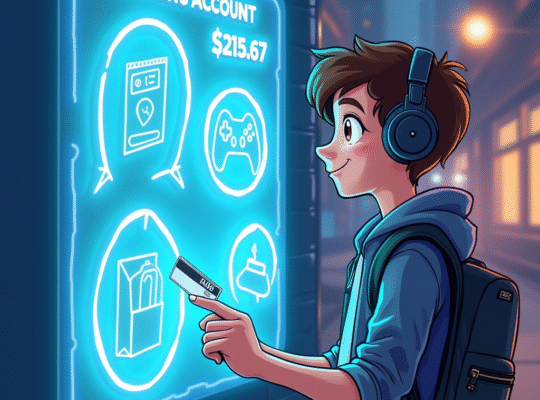I was just trying to put my money somewhere safe. It just… sort of unfolded.
It started with a question. Not even a big one. My dad asked, “Do you want to open a bank account for the money you’ve been saving?”
I shrugged. I mean, sure? I’d been keeping birthday money, a few random payments from dog-sitting, and then a $25 gift card I somehow turned into real money by selling it to my friend, and crumpled bills from snack runs all in one spot — a zip-up pencil pouch under my bed. But I didn’t think it was serious enough to need a bank.
So, we walked into a bank. I expected someone to just take my cash and say “cool, here’s your balance., and here’s the credit card” But instead, the lady at the desk started asking questions:
“Do you want a checking or savings account?”
“Would you like a youth combo?”
“Have you looked into interest rates?”
And my brain short-circuited. There were options?
I felt like I’d been carrying around a phone that only made calls, and someone just showed me it could also play music, check weather, and order pizza. Bank accounts weren’t just a place to stash money — they were tools. Each one did something different.
So I started asking questions. A lot of them. And here’s what I figured out,
Checking Account — The Main Wallet
A checking account is where money goes when you plan to use it soon.
It’s connected to a debit card, and you can use it to pay for food, games, clothes, bills — anything really. You can also transfer money from it or set up automatic payments.
But here’s the thing: a checking account doesn’t grow your money. Like, at all. It just holds it for you, safely, while you figure out what to do next. It’s perfect for your allowance or job income, but if you leave money sitting there for too long, it’s basically doing nothing.
You don’t get interest. You don’t lose money either — but you don’t gain. And if you spend more than you have? That’s called “over-drafting,” and it can come with surprise fees.
Savings Account — Where Money Learns Patience
I thought a savings account was just a place where you promise not to spend. But it’s more than that.
When you put money in a savings account, the bank actually pays you a small amount for keeping it there. It’s called interest — kind of like a thank-you from the bank for letting them “borrow” your money in the background.
The longer it stays, the more it grows. Not a lot (like, don’t expect millionaire status overnight), but it builds over time — especially if you keep adding to it.
But here’s the catch:
- You can’t take money out all the time. Most banks limit you to 6 withdrawals a month.
- If you go over that limit, they can charge a fee or even switch your account.
- Also: the interest you earn? It depends on the bank. Some pay way more than others, especially online banks.
I realized it’s a perfect place for things like:
- Emergency money
- Future goals (like a concert or a laptop)
- Anything you want to save for but not touch right away
Money Market Account — Grown-Up Savings with Access
This one felt like a “leveled-up” version of a savings account. It earns higher interest, but it also sometimes gives you check-writing abilities or even a debit card.
The catch? You usually need to keep a larger amount in it, like $1,000 or more. And it still has withdrawal limits, just like a savings account.
So yeah — if you’ve got a big stash or start making money consistently, it might be worth looking into. But for me right now? Probably later.
CD (Certificate of Deposit) — Lock It and Let It Grow
This one was actually cool once I got it.
A CD is like telling your money, “Go take a nap for 6 months, and when you wake up, you’ll be stronger.” You lock your money in for a set amount of time (like 6 months, 12 months, or even longer), and in return, you get a guaranteed higher interest rate than a normal savings account.
But there’s a rule:
No touching.
If you withdraw early, you get hit with a penalty — sometimes losing all the interest you earned, and then some.
So it’s good for long-term saving goals, but not if you’re someone (like me) who randomly decides they need bubble tea at midnight.
Joint Account — Shared Space
I have a friend whose mom opened a joint account with her.
They both have access to the money, so her mom can transfer in lunch money or birthday gifts, and my friend can buy school supplies or use the debit card if needed. It’s a good way to learn how to manage money with a little safety net — since a parent or trusted adult can see what’s happening.
But it only works if both people are honest and responsible. Because if one person messes up? Both feel it.
Business Account — For Your Side Hustle
I almost skipped this one until I remembered:
My other friend sells handmade earrings on Etsy. And she has a business account.
It helps her keep her “fun money” separate from her “work money.” Plus, it makes tax time easier. Not something I’m dealing with now, but definitely filed that away for later.
Online-Only Bank Account — All Digital, All Yours
Some banks don’t even have buildings. They live in your phone.
Accounts from places like Step, Greenlight, or Capital One MONEY are made for teens. You get a debit card, real-time tracking, savings goals, and usually no monthly fees. Some even let your parents set limits or help you build credit (without actually using a credit card).
I got one of these recently, and honestly? I check it more often than my social media.
What Changed
Before, I thought money was just about having it. Now I know it’s about knowing where to put it — and why.
I still only have two accounts: a checking account for spending and a savings account for my future. But I know what the others do now. I know which ones I’ll grow into. I know what questions to ask.
And I don’t keep my money in a pencil pouch anymore.
What About You?
If you had to pick just one account to start with, which would you choose — and why?
Checking? Savings? One of the fancy ones?
Drop your thoughts. I’m still learning too — and I kind of want to see how other people are figuring it out.





